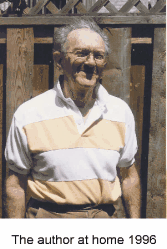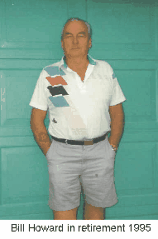1: What this book is about
Preface || 2: Setting the Scene >>
This is a book about people. These are the people who did their job to make GO-Transit
happen. It didn't just come out of thin air. It took a lot of people all doing their own thing. It
couldn't have happened at all if everything had not been just right.
People have lived around Lake Ontario way back in history, but it is only recent history that I
have lived through that I am writing about in my book. This story begins in the middle fifties,
when Toronto was booming with new immigrants arriving, mostly from Britain, but also from
other countries in Europe. I am one of them. First it was the sudden expansion of population
along the Lakeshore. The villages that had been tiny harbours and summer resorts on the lake
grew into bedroom communities serving the big city. Then there were too many automobiles for
the roads, and everybody expected the Government should build more roads. More roads cost
money and destroy properties for parking lots. The early chapters here talk about this expansion
that created a problem of traffic movement and traffic congestion enough that could have
destroyed Toronto of old.
The elected representatives didn't want to see the viable city centre of Toronto be destroyed
the way so many other cities had gone. They studied around, and came up with their solution.
Provide an alternate system of commuter transportation for people to travel without congesting
the highways. The later chapters give the story in their own words of who worked to build GO-Transit, their trials and tribulations.
I waited almost too long, before getting down to writing this book. I am writing about the
people who did the job that I am talking about, and that job was done thirty years ago. Some of
the people I would have liked to talk to are no longer accessible to me. Then there are some that
have moved away, others where age has caught up with them, and some that just felt it too long
ago to try to remember.
But I did locate 42 of those who worked with me on the job, and every one of them said how
much they had enjoyed talking over their memories, and were surprised at themselves for how
much they had been able to remember.
The "Job" was the first designing, building, and inaugurating of what is now well known as
"GO-Transit". There were big organisations being responsible, financing the project, looking
after the politics of the situation, and in fact, being the Senior Management. That was 'way back
between 1965 and 1967. Come to think of it, that is exactly thirty years ago in 1997. Two books
have already been written about the early days of GO-Transit. Both of them paid most attention
what the corporate bodies did. The Government of Ontario did this, Canadian National Railways
did that, the City of Toronto did something else. That kind of reporting is very impersonal.
Really it was the people inside those organisations that did the work, who made it all work out in
the end. That is what I am writing about: how each person did his or her part of the whole; just
what their work was; what they thought about the assignment they were given; how they did it
and how they felt about the end result.
So I started in late 1995, contacting all those people I could trace. I mean all those for whom I
could get a phone number or a mailing address. Then one by one, I have been able to meet with
them, and conduct a friendly interview. That has taken until now, late-Fall, 1998. All the people
I interviewed knew me well, and knew where we had fitted together in the organisation.

So who am I, and where did I fit in? After all the preceding
studies, political debates, meetings between the Government of
Ontario, CN, the municipalities, and all the organisations that
had a part to play in it, a joint Government-CN decision was
made to create the rail commuter service, that later got the name
"GO-Transit". There had to be a nucleus in the Government to
look after their responsibilities, and another nucleus in CN, to
steer the railway's part in the business. The Government set up
their man, Bill (W.T.) Howard, and CN fingered me. On the
railway's side, I was the man in the middle! So Bill and I
progressed the work together.
Bill and I worked together on that project, and, since then,
we have worked together on other projects. I was able to
interview him, and some others on the Government side, for this
book. His memories and his photographs make part of this
story.

The story starts long before the joint decision was made, long
before I was brought into the picture. But the early developments
that I describe in the first two chapters are what made it possible
in the end, for CN to put the first, new, intensive, commuter
service, on their rail lines in Toronto. The same rail lines that had
been loaded beyond their capacity, such that the freight and
passenger services of the railway were suffering delays. The
railway had more business than it could handle, bringing too
many unhappy complaints from the clients. I have written up as
much information as I could about that, to explain where we were
coming from. It may fall to others, to research more fully the
build-up. I only wanted enough to bring the story to the point
where I knew it from my own part in it.
I don't come into the story until CN moved me to Toronto in
1965. I am out again at the end of 1970, when the GO-Transit
service was well established, three years after inauguration, and
CN moved me back to headquarters in Montreal. It was just a dream then, what an expansive
future lay ahead for GO-Transit. Since then there have been more rail services, more routes,
double deck cars, integration with feeder bus services, a new and different ticketing system. I got
an up-date from the GO-Transit offices in mid-1999 that is given in the final chapter of this
book.
A few times in this book, I do include photographs what it is like today, but only to underline
the way it was. But the way it developed after 1970, well, that's another story, for someone else
to write about!
The story begins in the middle fifties, when …………..
Preface || 2: Setting the Scene >>

